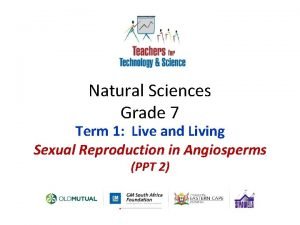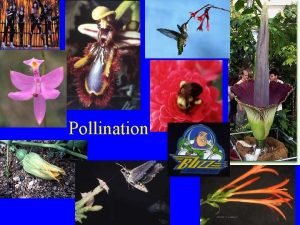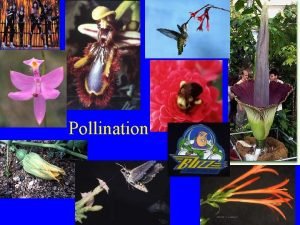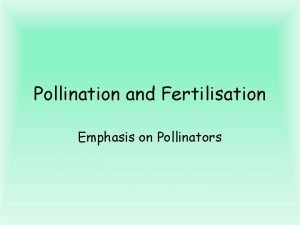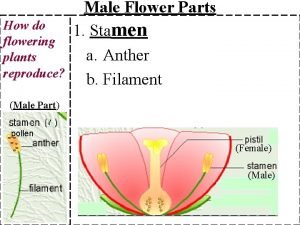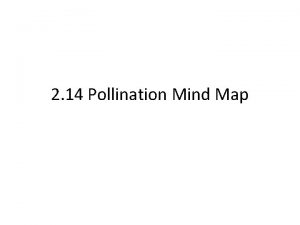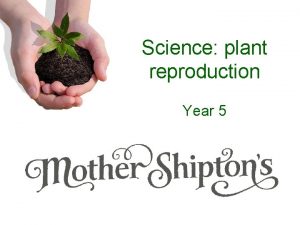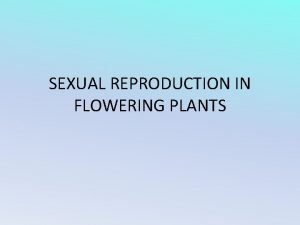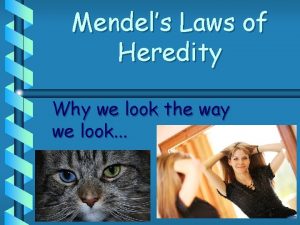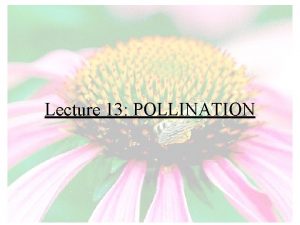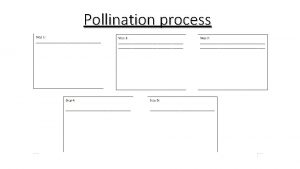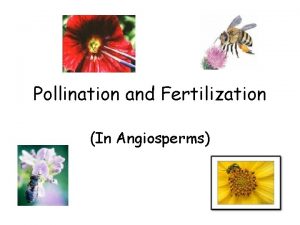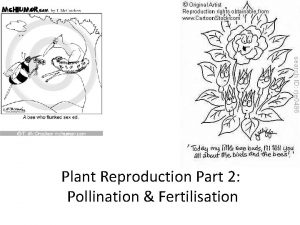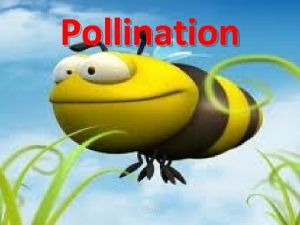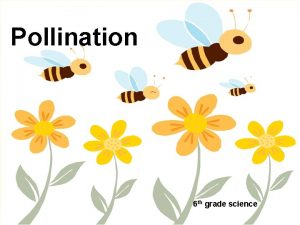Pollination Methods Susan Martin 7 th grade Science











- Slides: 11

Pollination Methods Susan Martin 7 th grade Science

Pollination • Transfer of pollen grains (male-sperm) to the female part (stigma) of a seed plant by agents such as gravity, water, wind, and animals

Some flowers are JUST male OR female • The Alder is monoecious. Shown here: maturing male flower catkins on right, last year's female catkins on left • (top right) male flower enlarged, showing stamens with pollen and reduced, sterile stigma; (below) shoot with flowers from female plant; (lower right) female flower enlarged, showing stigma and reduced, sterile stamens with no pollen


Function of a Flower • To attract pollinators by colorful petals, scent, nectar, markings and pollen

Pollination Methods- 1. Wind/Gravity • angiosperms& gymnosperms • No bright colors, special odors, or nectar • Most have no petals so Stamens and stigmas exposed to air • Large amount of pollen • lightweight, easily airborne • Usually trees & grasses

2. water • Pollen floats on the water’s surface drifting until it contacts flowers • Very rare, waterweeds and pondweeds

3. Animals • A. Insects – Bee- usually yellows or blues, have nectar and/or pollen – Butterfly: usually pinks or purples, scented, may have landing area, lots of nectar with little pollen, nectar guides & long tubes for butterfly tongues

Animals cont. • Insects continued – Moths: usually white, blooms at night, strong sweet scents – Beetles: may be spicy, fruity, or smell like decay – Fly: Can have nectar or pollen, or smell like decay

Animals cont. • B. Birds- greatest nectar specialization, odorless, red or orange flowers, long tubes for hummingbirds • C. Bats: large, white, strong odor, open at night, offer nectar

Resources • http: //www. life. umd. edu/CBMG/faculty/Moctezu ma/BSCI 124/Lectures/PPT/Lec 13_Pollination. p pt • http: //www. fs. fed. us/wildflowers/pollinators/bees. shtml • http: //www. pdphoto. org/Picture. Home. php
 Grade 7 natural science term 1 2021
Grade 7 natural science term 1 2021 Susan martin umd
Susan martin umd Pollination syndrome
Pollination syndrome Pollination syndrome
Pollination syndrome During pollination pollen is transferred from a stamen to a
During pollination pollen is transferred from a stamen to a During pollination pollen is transferred from a stamen to a
During pollination pollen is transferred from a stamen to a Make a concept map of the process of pollination
Make a concept map of the process of pollination Pollination fertilisation seed dispersal germination
Pollination fertilisation seed dispersal germination Describe the process of pollination.
Describe the process of pollination. Importance of apomixis
Importance of apomixis Structure that will become the fruit
Structure that will become the fruit Pollination experiment
Pollination experiment
